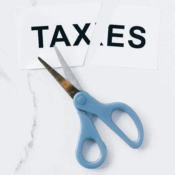SBA Loans Authorized by the CARES Act for Small Business Owners

By Joseph Nagel, Esq., LLM, CPA
What is the CARES Act?
The CARES Act passed the House and Senate and became law on Friday, March 27, 2020, when President Trump signed the Coronavirus Aid, Relief, and Economic Security Act (the “CARES Act” or the “Act”).
The CARES Act includes special SBA loan provisions under the Paycheck Protection Program (PPP) authorizing loans to certain qualifying small businesses for certain covered purposes.
Note: Businesses may also qualify for a loan under the Economic Injury Disaster Loan (EIDL) program. However, you cannot obtain loans under the EIDL and the CARES Act PPP for the same expenses (not a duplicative purpose loan). That is, if you do apply for EIDL loan, make sure it is not for the same expenses as those covered by the CARES Act PPP.
For many reasons, including the large amount of available funding and the possibility of loan forgiveness, businesses will likely prefer the CARES Act PPP, which is the subject hereof, to cover CARES Act qualifying expenses.
Why Is Urgent Action Required?
The CARES Act sets aside $394 billion for Section 7(a) small business loans under the PPP. Given the large demand for these loans, and the limited amount of funds that are available, businesses who apply late may be left out entirely. As such, we recommend each small business owner contact their bank/ lender as soon as possible.
Eligible Employers:
Generally, employers with 500 or fewer workers during the covered period (February 15, 2020 through June 30, 2020) are eligible. However, special provisions are applicable to businesses in the Accommodation and Food Service Industry sector which may extend the benefits to larger employers in that industry if the number of employees per location is less than 500.
Maximum Loan Amount:
If in business prior to February 15, 2019, then the amount of the SBA loan is limited to the lesser of $10 million or the sum of: 1) any refinance of certain covered loans under Section 7(b)(2) of the Small Business Act made between January 31, 2020 and the loan date and 2) 2.5 times total average monthly payroll for the one year period prior to which the loan is made. See QUALIFYING USE OF PROCEEDS, below.
Special rule for seasonal employers: Total average monthly payroll determined for February 2019 (or at the employer’s election March 1, 2019) through June 30, 2019 (rather than for full year prior).
Special rule for employers starting business after February 15, 2019: Total average monthly payroll determined for period January 1, 2020 through February 29, 2020 (rather than for full year prior).
Terms of Forgiveness or Repayment:
Businesses may qualify for forgiveness of the loan to the extent the loan proceeds are used for payroll, covered mortgage interest or rent, or utilities. But the amount of forgiveness is reduced if payroll is reduced during the covered period. Lenders have 60 days to make a decision after the application for forgiveness is submitted. For any portion of the loan not forgiven, the maximum maturity of the note is 10 years and bears interest at no more than 4%.
Importantly, lenders are required to provide for complete deferment of payments, including principal, interest and fees, for a period of not less than 6 months or more than 1 year.
Qualifying Use of Proceeds:
The loan proceeds can be used for (a) payroll costs (including virtually all compensation – but, limited to $100,000 per employee, pro-rated for partial years; (b) state and local taxes on compensation; (c) severance pay; (d) costs related to group health care including COBRA and any retirement benefits;, (e) payments of interest (but not principal) on any mortgage obligations, (f) rental payments; (g) payments of utilities, and (h) payments of interest (but not principal) on other debt incurred prior to February 20, 2020.
Important note: Payroll costs also include the compensation paid to any independent contractor as a wage, commission, income or similar compensation, in an amount not more than $100,000 per year (pro-rated for partial years). Employee salaries include not only base pay but also commission based and separation payments.
Note: The following are not qualified uses: (a) qualified family leave and sick leave already reimbursed under Families First Caronavirus Response Act; (b) the compensation of an individual employee in excess of an annual salary of $100,000, as pro-rated for the covered period; (c) Social Security and Medicare taxes (employee and employer portion), or (d) any compensation of an employee whose principal place of residence is outside of the United States.
Collateral Requirements:
There is no requirement that the business owner provide a personal guaranty, that the business provide collateral, or that the business provide proof that it could get a loan elsewhere.
Importantly, no owner will be personally liable for repayment unless proceeds are used for unauthorized purposes.
Application Process: A requesting business will submit to the lender (any bank or other institution who processes SBA loans) an application, including the following information and certifications:
- Verification of the number of full-time (or equivalent if the company employees part time workers) employees on the company’s payroll and such employees’ pay rates for the required periods.
- Documentation of any alleged covered payroll, mortgage, lease or utility payment and any other documentation the lender deems necessary.
- Verification of the alleged covered payroll, mortgage, lease or utility payment and any other documentation the lender deems necessary.
- Certification that loan was necessitated by the uncertainty of current economic conditions and to support the ongoing operations of the company;
- Certification that loan proceeds will be used to retain workers and maintain payroll or make mortgage payments, lease payments and utility payments;
- Certification that the company does not have an application pending for another Section 7(a) loan for the same purpose or that it is duplicative of amounts applied for or received under the applied-for loan; and
- Certification that during the period beginning on February 15, 2020 and ending on December 31, 2020, the company has not received amounts under Section 7(a) of the Small Business Act for the same purpose and duplicative of amounts applied for or received under the applied-for loan.
If you have any questions about obtaining an SBA loan authorized by the CARES Act or would like help with the application process, please contact Joe Nagel at 404-255-7400 or joe@hoffmanestatelaw.com.
Author
-

Joe joined Hoffman & Associates in 2000 and became a partner in 2007. He is licensed to practice law in Georgia, Florida, North Carolina, and Ohio and is also a Certified Public Accountant. Joe serves clients in the areas of estate planning, corporate law, employment law, mergers and acquisitions, succession planning, income and estate tax planning, and tax controversy.
View all posts
Recent Posts
Unmarried? Estate Planning is Even More Important for You
Are You A Digital Nomad?
Recent H&A Tax Controversy Wins
All Categories
Get a Free Consultation
Call us today to discuss your issue.



